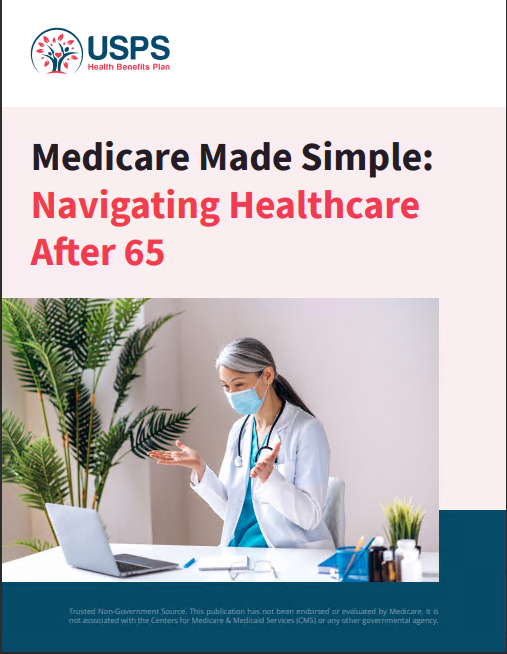Key Takeaways
-
The Special Enrollment Period (SEP) in 2024 was critical for many USPS employees and retirees who needed to meet the new requirements for PSHB coverage.
-
Failing to act during that window could have resulted in loss of prescription drug coverage, higher healthcare costs, or limited re-enrollment opportunities.
What Made the 2024 Special Enrollment Period So Important
The Special Enrollment Period (SEP) from April 1 to September 30, 2024, wasn’t just another routine window for health plan changes. For many Medicare-eligible USPS retirees and employees, this six-month period offered a one-time chance to meet newly mandated Medicare Part B requirements tied to the 2025 launch of the Postal Service Health Benefits (PSHB) Program.
If you were Medicare-eligible and did not already have Part B, this was your opportunity to sign up without late enrollment penalties. Why was that so important? Because in 2025, keeping PSHB coverage depends on whether you’re enrolled in Medicare Part B—unless you qualify for an exemption.
Who Qualified for the Special Enrollment Period
The SEP applied specifically to USPS annuitants and eligible family members who:
-
Were entitled to Medicare Part A before April 1, 2024, but had not enrolled in Part B.
-
Were not already enrolled in Medicare Part B.
-
Wanted to maintain full PSHB coverage in 2025.
During this time, you were allowed to sign up for Medicare Part B outside of the usual Medicare General Enrollment Period without facing lifetime penalties.
Why Enrolling in Part B During the SEP Was Crucial
Missing the 2024 SEP could result in limited or no access to PSHB drug coverage starting January 1, 2025. Here’s why that window mattered so much:
-
Integrated Coverage: Many PSHB plans are now integrated with Medicare Part D through an Employer Group Waiver Plan (EGWP), which offers added prescription drug protections.
-
Re-Enrollment Restrictions: If you opted out of Part B or missed the SEP, rejoining later may not be easy. You might face long waiting periods, restrictions, or penalties.
-
Financial Impacts: Those who miss their SEP could see higher out-of-pocket healthcare costs starting in 2025, especially for medications and specialist visits.
Exceptions to the Rule: Who Didn’t Need Part B
Some USPS retirees and family members were exempt from this requirement. These include individuals who:
-
Retired on or before January 1, 2025, and were not already enrolled in Medicare Part B.
-
Were actively employed and aged 64 or older as of January 1, 2025.
-
Live permanently overseas.
-
Receive healthcare through the Department of Veterans Affairs (VA) or Indian Health Services (IHS).
If you fall into one of these categories, you can continue your PSHB coverage without Part B. However, it’s essential to keep documentation verifying your exemption.
What Happens If You Missed the SEP in 2024
If you didn’t enroll in Part B during the 2024 Special Enrollment Period and aren’t exempt, your PSHB plan may exclude drug coverage as of January 1, 2025. Additionally:
-
You will not be automatically enrolled in the Medicare Part D Employer Group Waiver Plan.
-
You might only have limited access to in-network providers for certain services.
-
You may lose access to cost-saving features such as insulin caps and reduced out-of-pocket limits.
You may still be able to enroll in Part B during the annual General Enrollment Period (January 1 to March 31), but your coverage wouldn’t begin until July, and late enrollment penalties may apply.
Prescription Drug Coverage in 2025: Big Changes for Medicare-Eligible Retirees
As of 2025, PSHB drug coverage is automatically provided through a Medicare Part D EGWP for those who are Medicare-eligible and enrolled in Part B. This new structure includes:
-
A $2,000 annual cap on out-of-pocket drug costs.
-
A $35 monthly cap on insulin, making ongoing management of chronic conditions more affordable.
-
An expanded pharmacy network, giving you more access across the country.
However, opting out of the EGWP or failing to meet Part B requirements results in losing access to these benefits. Re-enrollment into the drug plan is not guaranteed, and you could be left paying much more out-of-pocket.
How the SEP Tied Into the PSHB Transition
With the retirement of the FEHB program for postal employees, the move to PSHB required proactive steps in 2024. The Special Enrollment Period was a bridge into the new structure. Here’s how:
-
USPS annuitants and family members were auto-enrolled into a PSHB plan for 2025—but only if they met Medicare Part B requirements.
-
If you didn’t act, your coverage changed, and potentially not in your favor.
-
The SEP allowed USPS retirees and employees to align their Medicare and PSHB benefits in advance.
What You Should Do Now in 2025
If you used the SEP in 2024, you should already be seeing the benefits of that timely decision. However, if you missed it, there are still steps you can take in 2025:
-
Contact Social Security to explore if you qualify for a Special Enrollment Period based on other life events.
-
Check your PSHB plan details to understand what is or isn’t covered.
-
Review exemption criteria to verify if you qualify without needing Medicare Part B.
-
Consider the next General Enrollment Period in early 2025, but be aware of coverage delays and penalties.
The good news? Many USPS retirees who acted in time are now experiencing smoother transitions and fewer disruptions in care.
How Long-Term Costs Are Affected
One of the biggest benefits of acting during the SEP is long-term financial protection. The integration between PSHB and Medicare in 2025 helps reduce healthcare expenses in several ways:
-
Lower copayments for doctor visits and prescriptions.
-
Annual caps that reduce the impact of high drug costs.
-
Better coordination between your PSHB plan and Medicare for claims and coverage.
Failing to act means you could face steeper bills, gaps in drug coverage, and limits in provider access. And once you miss that SEP window, reversing course isn’t always quick or easy.
Tips to Stay Prepared for Future Changes
Health benefits for USPS retirees continue to evolve. To make sure you’re never caught off guard again, here’s what you can do:
-
Bookmark key dates like Open Season (typically November to December) and Medicare enrollment periods.
-
Use official resources like LiteBlue or KeepingPosted.org to stay updated.
-
Keep all Medicare and PSHB documentation in a secure place.
-
Talk to a licensed agent before making any major enrollment decisions.
The 2024 SEP was a wake-up call about how quickly things can change—and how important timing can be when your health and budget are on the line.
Protecting Your Future USPS Coverage
Looking ahead, understanding these changes and acting within the right timelines will make all the difference. Whether you’re already retired or still working, coordinating your Medicare enrollment with PSHB requirements is now a permanent part of your retirement planning.
If you’re unsure about your options, the best step is to get in touch with a licensed agent listed on this website for professional advice tailored to your situation.










